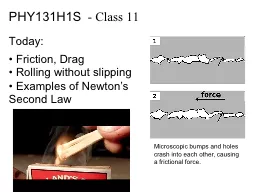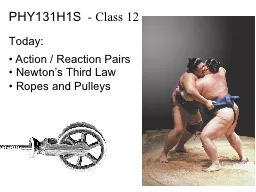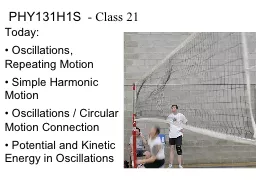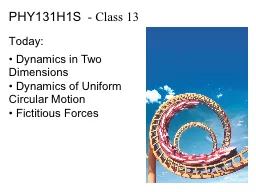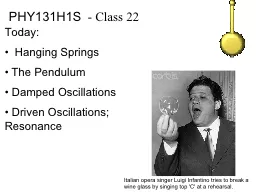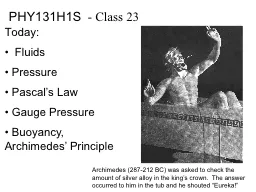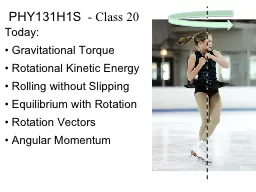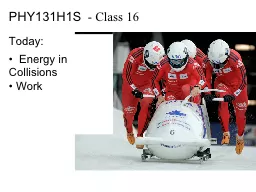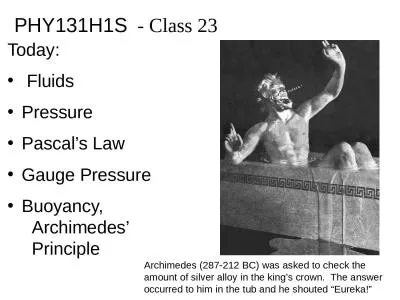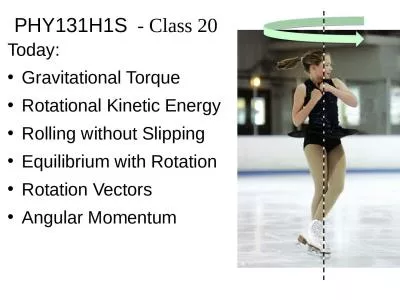PPT-PHY131H1S
Author : faustina-dinatale | Published Date : 2016-04-23
Class 11 Today Friction Drag Rolling without slipping Examples of Newtons Second Law Microscopic bumps and holes crash into each other causing a frictional
Presentation Embed Code
Download Presentation
Download Presentation The PPT/PDF document "PHY131H1S" is the property of its rightful owner. Permission is granted to download and print the materials on this website for personal, non-commercial use only, and to display it on your personal computer provided you do not modify the materials and that you retain all copyright notices contained in the materials. By downloading content from our website, you accept the terms of this agreement.
PHY131H1S: Transcript
Download Rules Of Document
"PHY131H1S"The content belongs to its owner. You may download and print it for personal use, without modification, and keep all copyright notices. By downloading, you agree to these terms.
Related Documents

